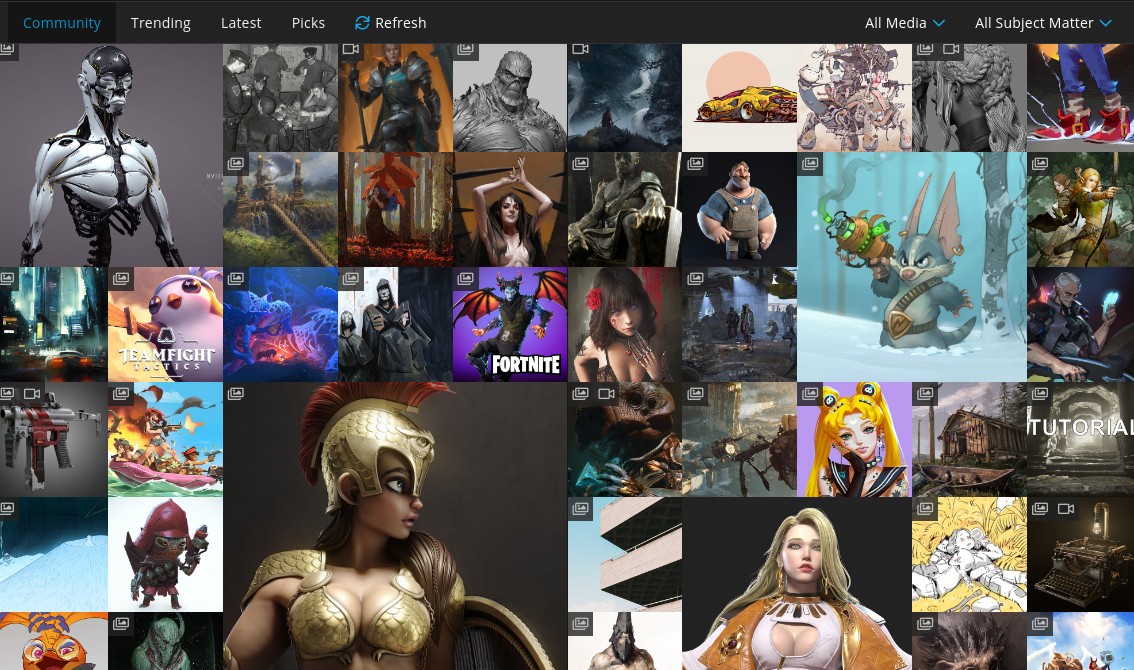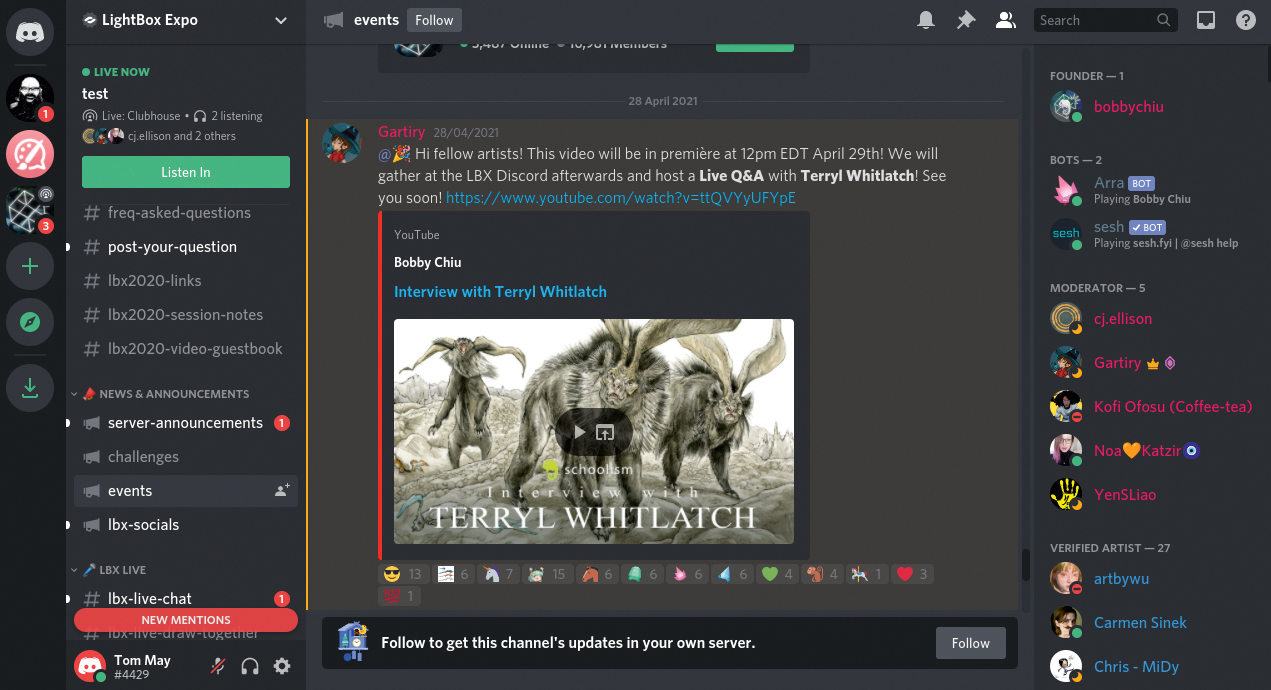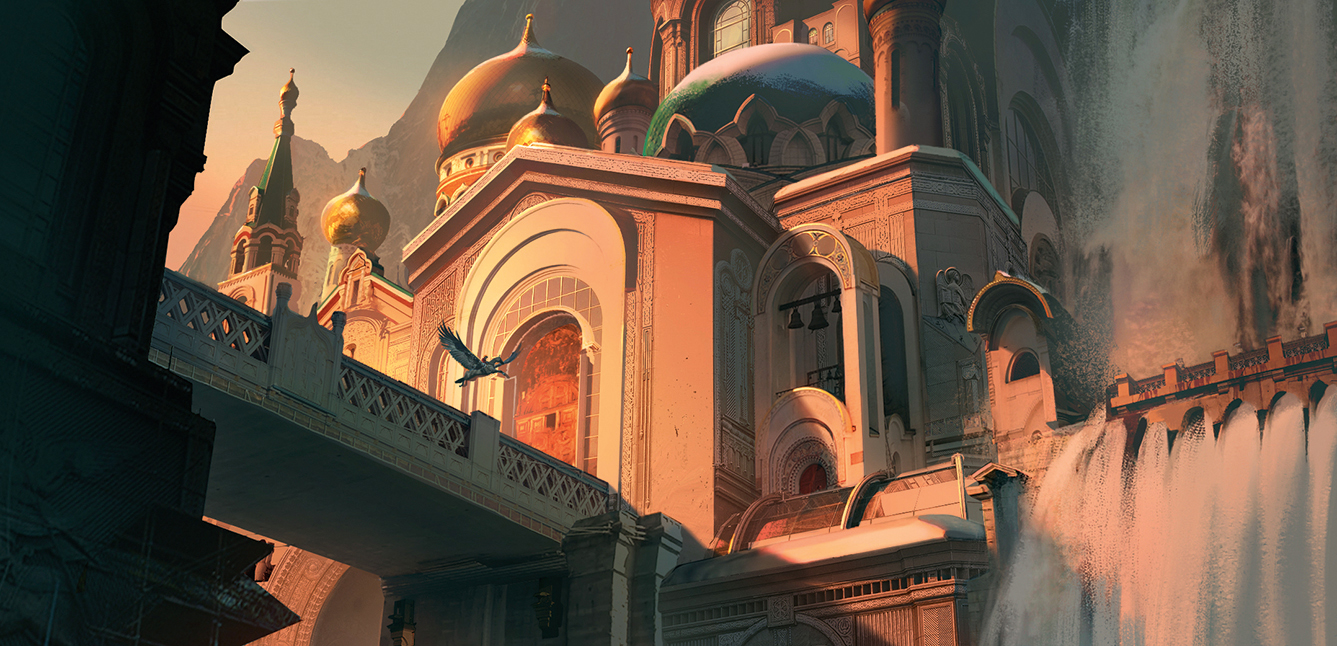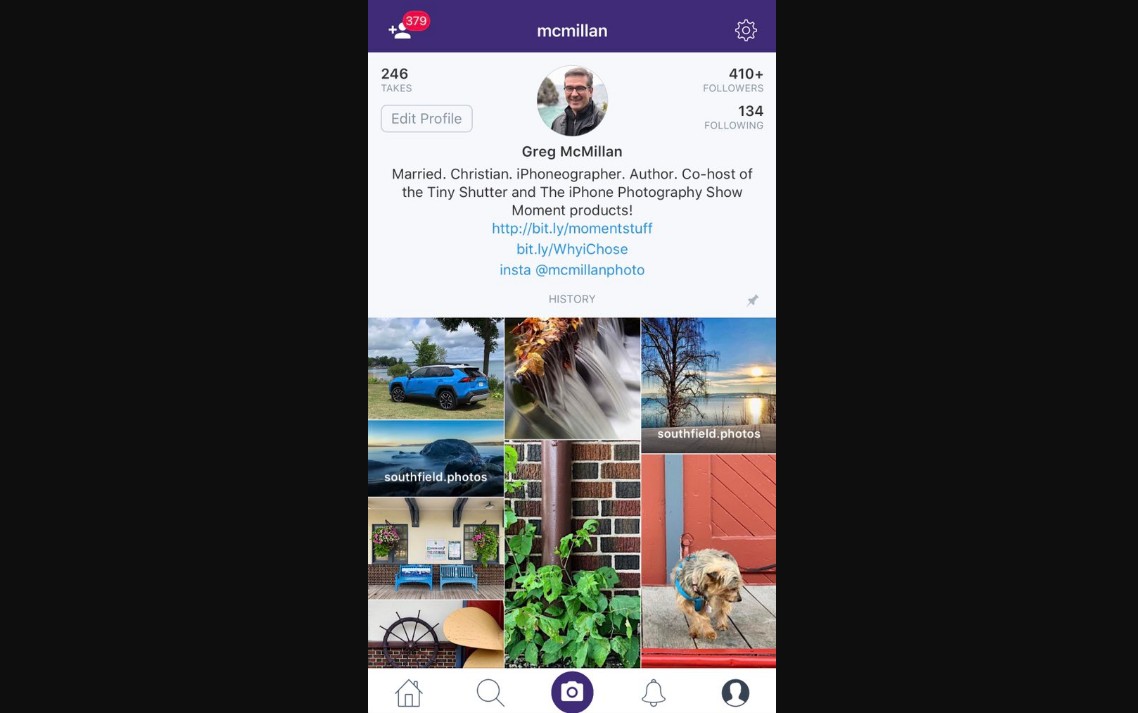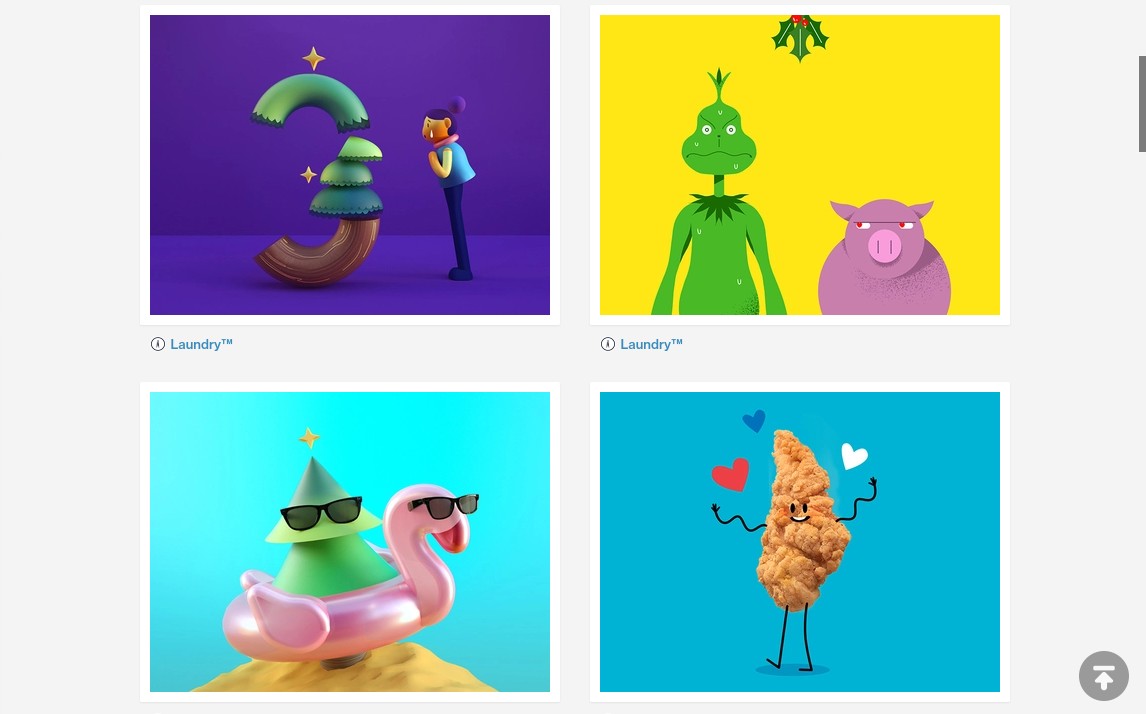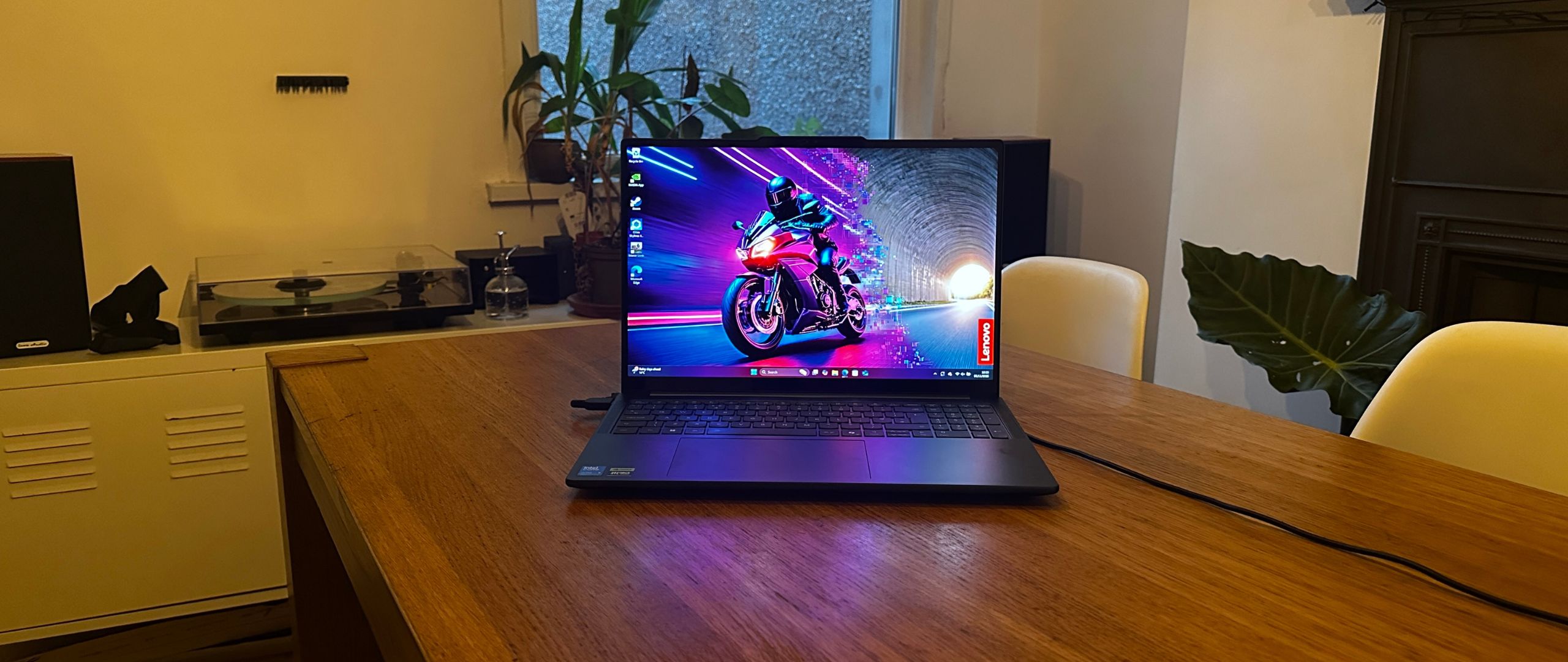The 13 best social media platforms for artists and designers
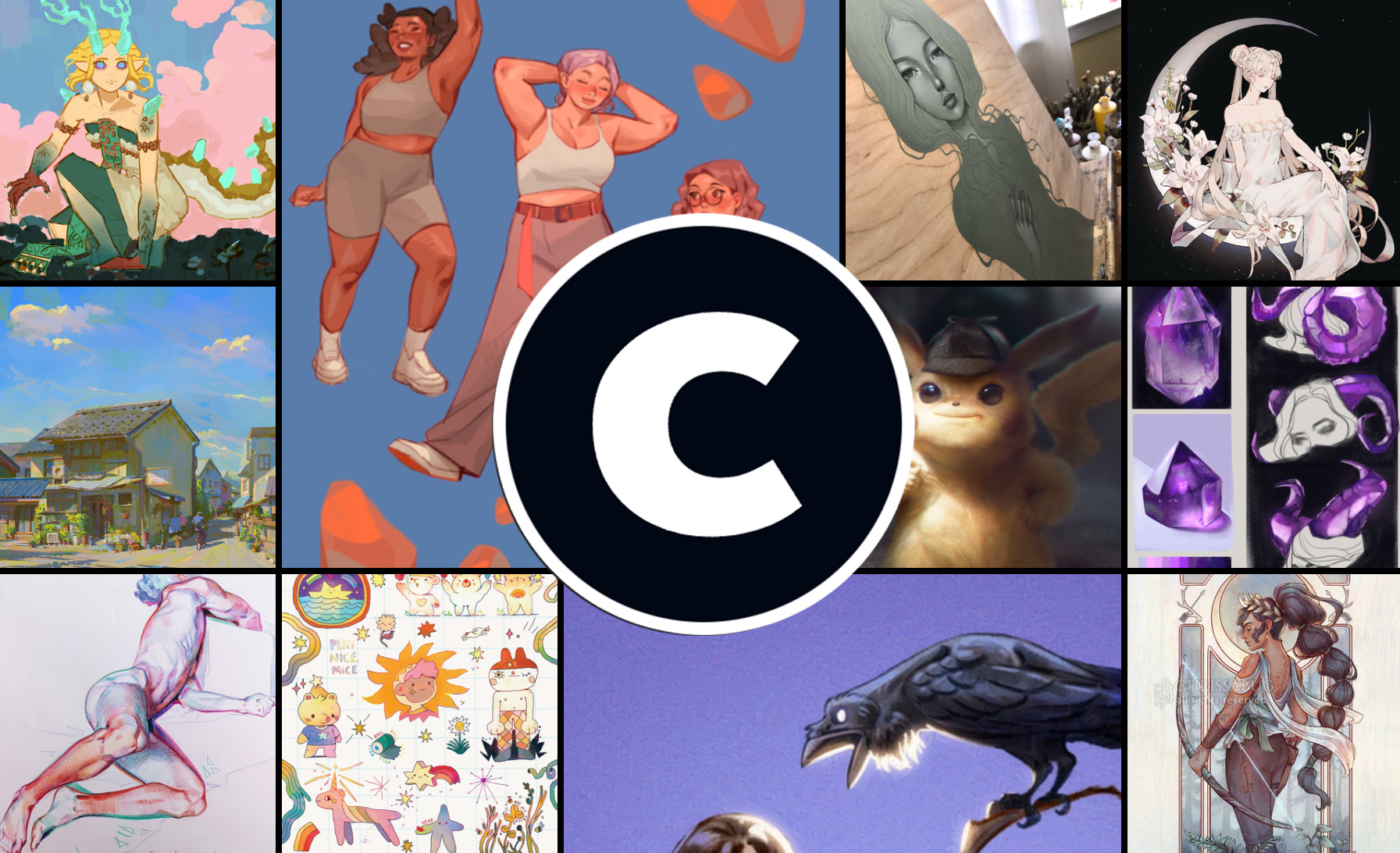
The best social media platforms for artists and designers are not only a place to share your work, but to build a community of like-minded creatives. From Instagram to ArtStation, there are plenty of online platforms to spotlight your work – it's just a matter of finding the right fit for you.
To help you decide, we consulted a panel of creative professionals, including artists, designers, photographers and filmmakers, to discover which platforms are best. Once you've found your match, it's worth checking out our ultimate guide to social media for creatives, and for more inspiration, take a look at our guide on how to create an online portfolio.
The best social media platforms for artists and designers
01. ArtStation
Launched in 2014, ArtStation may not have changed a great deal over the years. But it remains the place to post your profile for professional 2D and 3D artists, especially those working in the games, film, media and entertainment industries, or those aspiring to do so.
As we reported in our article how to get a job as a video games artist, recruiters nowadays don't just encourage you to post your work on ArtStation; they expect it. Some artists still hold back from doing so, because they don’t want to engage in what they see as a popularity contest. But by and large, recruiters don’t really care how many likes or followers you have; it's purely about whether or not they like your art, and if it fits what they're looking for.
“We’re interested in artists who produce the sort of work that we can use; that’s it," says Kevin McDowell, art director for Creative Assembly's Total War series. "So make sure it’s visible to us, and don’t worry about the numbers.”
02. Behance
Behance is the closest thing on this list to a pure portfolio platform, but with a social aspect plugged in. Founded by Matias Corea and Scott Belsky in November 2005, the company was acquired by Adobe in 2012, and its reach has since become enormous.
Behance offers a way to show more of your work than just a single, eye-grabbing image. As motion designer and 3D generalist, Jesus Suarez explains: "Behance is great for sharing the making of and behind-the-scenes aspects. It allows for more complete look at the project."
Daily design news, reviews, how-tos and more, as picked by the editors.
Of course, you could do all that on your own website, but the social aspects of Behance means that it's worth posting stuff there too, if even you're just duplicating the same content. Not only do you get the benefit of sharing your visual work, but you also build connections and community.
And that's exactly the approach Laundry takes, says Richardson. "Our Behance basically mirrors our company site," he explains, "but because it is so shareable and other creatives go to Behance for creative inspiration, it is an ideal place for us to share the behind-the-scenes and case study aspects of our projects."
London-based illustrator, designer & photographer Tim Easley takes a similar view. "I use Behance for full projects alongside my website, because there’s a decent chance of being featured there, which brings in a lot of views," he says. While Cliff Nowicki, a web designer based in Michigan, USA says. "I use Behance because it's super easy to just put something up online."
03. TikTok
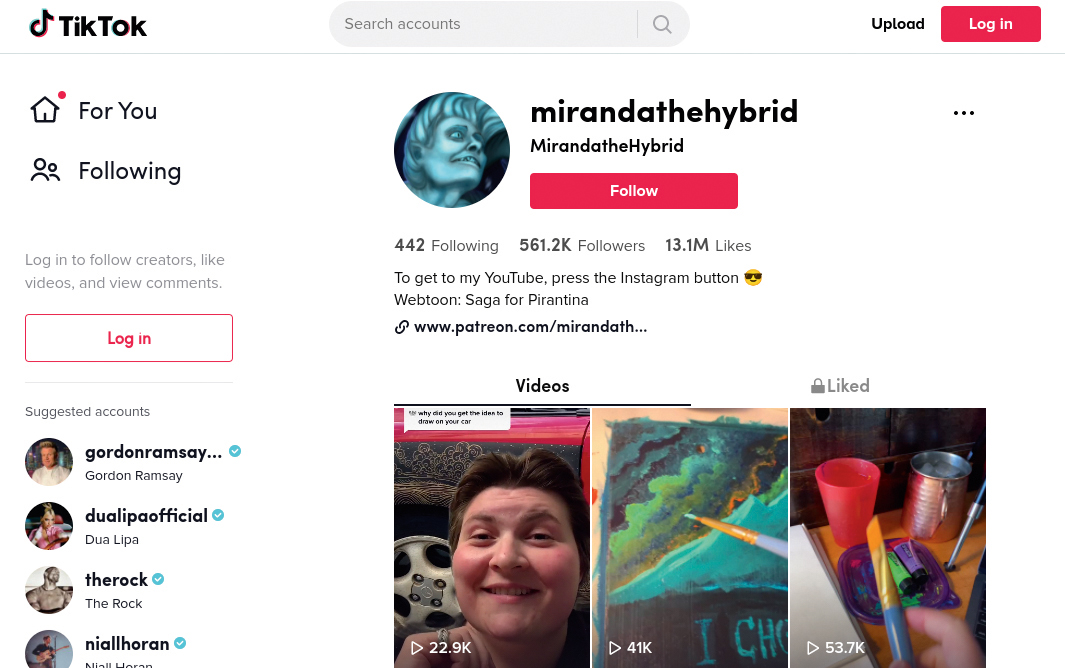
Most people associate TikTok with lip syncing and viral dance trends, yet the short-form video app, which has almost 700 million active users, is attracting artists too. TikTok is all about the visuals, so it's great for time-lapse videos or animated shorts that'll stop scrollers in their tracks.
“I was introduced to TikTok by a friend and saw the potential for high exposure,” says Ohio-based animator and illustrator Miranda Pavelle (@mirandathehybrid on TikTok). “My first ‘viral’ video was just a sketch of my Miata, and it received 6,000 likes and 20,000 views in a day or two, which is more attention than I’d ever gotten on other social channels.“
Miranda now has more than half a million followers, and likes how the brevity of TikTok videos forces you to be snappy and to the point. “I love teaching and sharing my knowledge in bite-sized, light-hearted form,” she says. “My art videos are miniature versions of full tutorials, so if you see something useful, you can go to my YouTube and get the full lesson.”
Her advice for launching a TikTok channel is simple. “Be yourself,” she stresses. “Trends rack in views, but they eventually die and make way for something else. What never dies is people connecting to you as a person: your quirks, your process, you getting bubbly over what you’re passionate about. Gen Z and millennials are pretty darned tired of being advertised to; so don’t jump on the app with the
intention of starting a business or getting views, because people will be able to tell.”
04. Cara

Cara has emerged as an Instagram alternative, and it's becoming particularly popular among artists because of its no-AI policy. The platform aims to remove AI-generated content when it's detected (it uses a third-party service to identify such content), and it also promises not to use images on the platform to train AI models. It's also working on a Glaze integration directly in the app to provide users with a easy way to protect their work before posting.
That means that Cara could be a good social media platform to consider if you're worried about your work being stolen to train AI. The downside is that it's audience is still mainly limited to other artists, which means you may not reach potential customers. Cara is available for Android, iOS and as a website and is free to use. It doesn't support video uploads directly, but you can embed video and Sketchfab links, and it does support GIFs – animated GIFs can be displayed directly as covers, which is making the app popular with animators. See our article what is Cara app? to learn more.
05. Discord
Founded in 2015, Discord may not be top of your list of obvious social media platforms for artists and creatives, but because this web and mobile app is focused on enabling specific communities to hang out and connect, rather than just a sea of random followers, in the Covid era, it’s really taken off.
“I became an avid Discord user once everyone started working from home,” says LA-based concept designer and illustrator Airi Pan. “It offers voice, text options and streaming options, so it’s perfect as a ‘virtual hang spot’ for friends or coworkers.
“I use it in voice format, to mimic working alongside them, as we hunch over our tablets drawing. It’s like a virtual common room! It also acts as a community hub for events such as LightBox Expo, Weekend Warrior Painters, or small groups of artists who are just trying to get better.”
Discord is best for building your creative community, and a great platform to use in tandem with other platforms like Instagram or ArtStation. Create a server to interact with your followers and build connections, allowing you to have a more personable connection with other creatives.
Spiridon Giannakis, a German designer and publisher of art books, recently launched a Discord server to chat about his projects, as well as mental health issues (visit Artbook News to learn more). “The environment on Discord is really positive,” he enthuses. “With the help of moderators, everything can be kept very tidy, and conversations are extremely valuable. It’s a bit like the feel of a forum, with the addition of newer tech aspects.”
He hasn’t had a single negative encounter on Discord so far. “Unlike most social media, which just makes me wonder every day if I really need it. It’s all been positive,” he says. “My server now has over a thousand people: I never expected so many. I always thought art books are very niche, but it’s shown me that the interest is there.”
06. Twitch
If you're looking to build a wider audience for your art, and broaden your appeal, then Twitch is the social media platform of choice. Launched in 2011, this live-video platform was originally developed for gamers. But artists are also using it to live-stream their process, make new contacts and grow their personal brand.
Montreal-based art director and lead concept artist Nicolas Vallet is among them. “Long story short: I wanted to connect,” he explains. “Living in China at the time, I was very focused on my day-to-day work, but quite bad at publicising myself. Art streams are a nice way to split the difference. I get to draw and talk to people, at the same time as practising my technique.”
Vallet’s Twitch channel stayed small for a while, but the pandemic meant he had more free time. “So I added extra days, and my audience began to grow. I’d ask questions to know people better, and let them share their own experiences. I started to attract regular viewers, and some of them are friends now.” He has this advice to anyone live-streaming on Twitch: “People like energy and passion, so share that first and foremost. And be consistent: a regular schedule will help people to find you.”
07. Dayflash
Never heard of Dayflash? You're not alone. But right now, it's rapidly gaining popularity amongst creatives. And that's because the iOS app, launched last year, basically works like Instagram used to. In its own words, there's "no algorithm and no more missing posts from your friends".
Co-founder Rupali Renjen tells us that, in her view, "Photo sharing platforms unfairly use algorithms to dictate which followers get to see a user's posts. And as they push users to spend more time on stories from friends, long-form videos and shopping, all so they can make more money on ads and business accounts, less and less time is being spent on creators, which is taking away visibility and opportunity".
And creatives do indeed seem to be responding well to the new platform. "I love using Dayflash," says New York photographer David Castilllo. "You can post full resolution photos, no algorithms, always genuine engagement, no bots. And I love the aesthetics of the interface."
Scott Terry, a Chicago-based creator and ambassador for brands, agrees. "It’s pretty great because you can post full frame and high resolution, unlike Instagram," he points out. And there's video, too.
"For me personally, I love being able to show my work as I’ve made it, rather than being compressed like on Twitter or Instagram," says filmmaker Tyler Palmer. "And even with little following, my work still gets seen."
LA-based photographer Torenzo Perry is also a fan. "I personally love the app because it focuses more on the content, and less on the likes and views," he says. While Greg McMillan, an iPhoneographer and co-host of the Tiny Shutter podcast, admires both the app and the philosophy of its makers. "They have it figured out as to what a social platform should be and how it should work," he enthuses.
And it's not just photographers who are fans. Take Brazilian character artist Danielle Pioli, who uses it to share her illustrations and comic strips. "I really like Dayflash," she says. "Since I began using it, it has improved a lot. Not only the usability of the app but also the quality of the content inside it. I see this app as a new trend for visual artists of all kinds. It's easy to use, pretty straightforward, and fun.
08. Instagram
The rise of Dayflash is a sign that a few people's love affair with Instagram is waning. But overall, Instagram remains far and away the most popular visuals-based social media platform today, and for most creatives, a presence of some sort on the image sharing platform remains a must since it's the platform with most visibility, even if posts don't tend to get seen these days because there are so many ads.
"While, Behance is great for sharing and getting your work in front of professional eyes, I tend to use Instagram mostly," says George Kofi Prah, designer at New York and LA branding agency loyalkaspar. "It's the perfect tool for creatives in the way that Spotify is for musicians.
"It provides access to a much wider audience than any other platform and allows me to engage with literally anyone. Using hashtags makes being discovered and finding new and interesting things a lot easier."
Ease of use is also an important factor for many. "I use Instagram, followed by The Dots, because these platforms are easier and more accessible in terms of commitment per post," says Welsh/Sri Lankan artist Murugiah. "Behance has too many fields to fill in per post!"
We need to promote our work where our audience lives
Amy Kilner
For Amy Kilner, freelance designer and founder of inspiration blog The Design Fix, using Instagram is a no-brainer. "You have to remember we're designing for our clients' objectives, not other creatives," she points out. "So we need to promote our work where our audience lives. Don’t get me wrong, I love creative sites – I run my own, after all - but it’s not where my clients are!"
Laundry follows the same logic, says Richardson. "Artists and clients alike all seem to go to Instagram for design and animation inspiration, which is why we use it," he reasons. "We've even landed projects from it and clients increasingly ask to track our work there. It's also the easiest to share and always has been. Additionally, it is easy to schedule posts without formatting problems."
If you're looking to make direct sales, see our guide to how to sell on Instagram.
Luke Manning, creative director of Pencil Studio, is primarily interested in getting work shared amongst the creative community, and for that it’s been Instagram and Twitter that have been the most effective, he says. "Our own posts have been picked up shared by popular design blog sites and we’ve even had direct contact by brand owners via sharing our latest projects," he explains. "I like Behance and how it works, but for us it is yet to be fruitful beyond having a place to store projects."
And if you're wondering how to be successful on Instagram, we've got a piece on how to change the font in your Instagram bio plus a guide packed full of pro tips on how to increase Instagram engagement.
09. Clubhouse
Clubhouse was launched in 2020 and is a voice-based social platform that hosts virtual rooms for live discussions. It’s an iOS and Android app that at time of writing was invite only. If you want to learn about Clubhouse, see our guide, what is Clubhouse?
Being audio only, you might not think visual artists would be interested in Clubhouse, but in fact there’s quite a bit going on. For instance, LightBox Expo hosts a regular discussion there every Tuesday at 9am PST, with big-name creatives such as Karla Ortiz, Brynn Metheney, Lorne Lanning and Elsa Chang taking part. If you’re not on Clubhouse, you can listen in in on Discord.
Airi, who’s called @pix_bun on Clubhouse, recently participated in a LightBox session called ‘Fake it till you make it, but keep it genuine’. “It was delightful!” she recalls. “The discussion was well-paced thanks to the moderators such as Bobby Chiu.” Normally though, she uses Clubhouse as more of a podcast app, as something to listen to while she works.
“You can hear veteran industry professionals speak, and hear great tips you won’t get from a scripted interview,” Pan says. “Depending on the talk, it can feel like people conversing right next to you, which makes working from home a little less lonely.”
10. DeviantArt
Launched in 2000, DeviantArt has more of an amateur, hobbyist feel to it than ArtStation. And so while you're less likely to get commissions directly through it, it's a better platform for putting your art in front of your peers and getting feedback.
People tend to come and go from DeviantArt over time, and author and illustrator Katy L Wood is no exception. "DeviantArt was the first social media site I joined, about 13 years ago, when I was a teenager," she recalls. "It was a huge part of my growth as an artist, due to all the amazing free resources it had, from tutorials to brushes to stock. Plus, back then, DeviantArt had a great community. People really talked and interacted and had fun."
Eventually, though, she felt the community had started to wane and turned her attentions elsewhere. "However, in the last year I've been working my way back into using DeviantArt, especially with its delightful rebrand," she says. "I came back primarily because DeviantArt is straightforward. There are no algorithms to game, it's well organised, and it's supportive of every type of art and writing I do."
11. The Dots
Launched in 2014, The Dots is an online professional network that aims to be "LinkedIn for creatives". And it's had a fair amount of success in doing so, attracting companies such as Google, Burberry, Sony Pictures, Viacom, M&C Saatchi, Warner Music, Tate, Discovery Networks and VICE to use it as a recruiting tool.
There are lot of other things you can do on the platform besides just waiting to be offered a job, though. These include connecting with other creatives in your field, checking out people's side hustles, responding to requests for collaborations, keeping up to the latest events and more.
It's very much a case, then, of what getting out what you put in. And unlike LinkedIn, every page you interact with is beautifully designed.
Currently, most creatives seem to use The Dots as part of a self-promo mix, rather than focusing on it exclusively. Yorkshire-based freelancer Joanna Kosinska, for example, says: "I will post my work pretty much anywhere where I can gain traction, including The Dots, Behance, Dribbble, and Creativepool.
"As a graphic designer and photographer, I have to put my name out there. So any platform that makes it easier to find my work is my friend, and I'll gladly invest time to create a profile and share projects."
12. Dribbble
Launched in 2009 by Dan Cederholm and Rich Thornett, Dribbble was never intended to be a straightforward portfolio site like Behance. Its specific angle was about teasing out small glimpses of what you were working on, when you were unable to share the whole project.
Dribbble has since evolved beyond web and mobile app design to take in icon design, branding, animations, prototypes, illustrations, graphic art and other disciplines. But there's still a focus on informally sharing small screengrabs (known as 'Shots'), rather than setting out big and detailed images in an organised and carefully annotated way. As Albuquerque-based web designer Jack Harner puts it: "Dribbble feels more like a community than a portfolio site."
That doesn't mean it's just designers talking to designers, though. The platform now actively helps companies such as Apple, Airbnb, Facebook, Google, Dropbox and Slack to hire designers, and many clients use it to find people to commission.
"Dribbble has been a great platform for us to generate new business especially within the tech industry," says PJ Richardson, partner at Los Angeles design studio Laundry. "Very graphic and illustrated work seems to play the best, but we've also gotten new clients because of what we post there as well."
For others like Nicola Jones, aka Hello I'm Nik Design, Dribbble is a place for posting work that doesn't fit in your main portfolio. "This is where I put my personal project illustrations, which is something I’d like to do more, so if I ever get any illustration enquiries I point them there. Illustration is more of a side thing for me, as I do brand and marketing design before all that for clients."
13. LinkedIn
Even though it's had a total rebrand, LinkedIn doesn't immediately grab you as being a useful social platform for creatives. But art, design and filmmaking are businesses like any other, and many creative pros say they're making good use of LinkedIn regardless of what it looks like. It's perfect for getting your work out there and building business connections.
Take Frank Suyker, aka Mr Sugar, an art director based in the Netherlands. "I use LinkedIn to get recurring revenue out of my existing clients," he explains. "By posting my blog posts on LinkedIn, I'm kept top of mind. And when they do have work that needs to be done, they come to me."
Laundry has also made a shift to LinkedIn recently, which it has been actively using for the past year. "Facebook used to be a great place to share work but it became cluttered with ads and not design-focused posts," says Richardson. "in contrast, the very work-focused and curated nature of LinkedIn has made it a forum to share design, animation, and behind-the-scenes content, which has garnered a lot of great attention for us."
For more options, see our guide to the best Twitter alternatives. For more tips on social media see our Instagram Reels tutorial and our piece on Instagram Reels vs TikTok.

Tom May is an award-winning journalist specialising in art, design, photography and technology. His latest book, The 50 Greatest Designers (Arcturus Publishing), was published this June. He's also author of Great TED Talks: Creativity (Pavilion Books). Tom was previously editor of Professional Photography magazine, associate editor at Creative Bloq, and deputy editor at net magazine.
You must confirm your public display name before commenting
Please logout and then login again, you will then be prompted to enter your display name.
